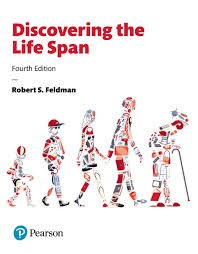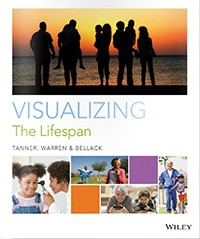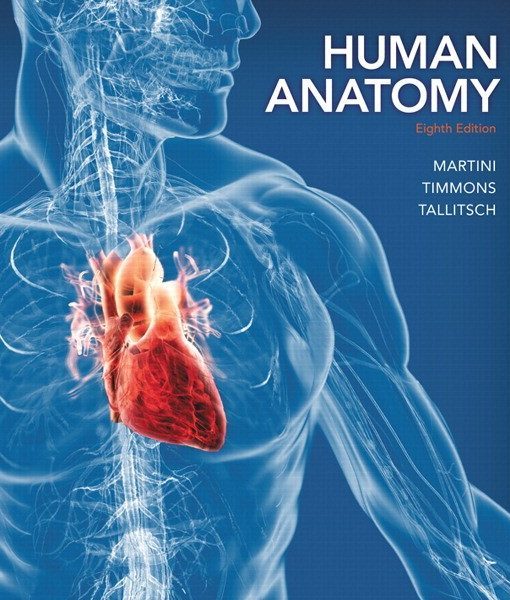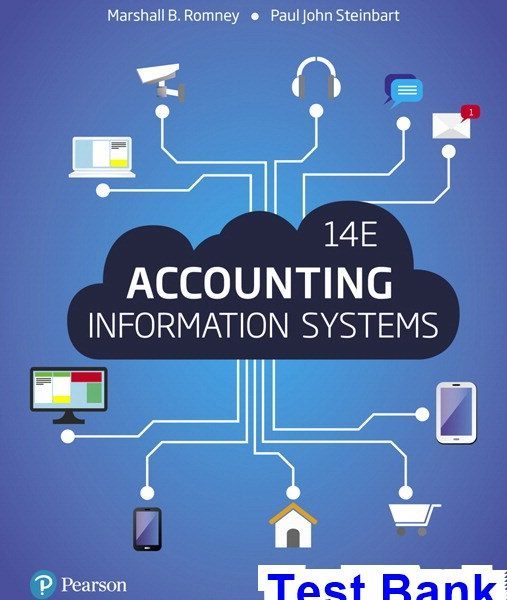Strategic Communication in Business and the Professions 8th Edition O’Hair Friedrich Dixon Test Bank
$35.00
Strategic Communication in Business and the Professions 8th Edition O’Hair Friedrich Dixon Test Bank
- Description
- Reviews (0)
Description
You will receive this product immediate after placing the order
978-0134011684
Key: Answer, Page, Type, Learning Objective, Level
Type
A=Applied
C=Conceptual
F=Factual
Level
(1)=Easy; (2)=Moderate; (3)=Difficult
LO=Learning Objective
SG=Used in Study Guide
p=page
O’Hair_Chapter 3_TB
Multiple Choice Single Select
M/C Question 1
Which term encompasses all the factors that affect people’s behavior?
a) Culture
b) Ethnicity
Consider This: This term broadly explains why the local people of various nations behave in a way that is different from mainstream populations in those countries.
LO 3.2: Explain how conflicts in diversity stem from negative or inaccurate stereotyping
c) Diversity
Consider This: This term broadly explains why the local people of various nations behave in a way that is different from mainstream populations in those countries.
LO 3.2: Explain how conflicts in diversity stem from negative or inaccurate stereotyping
d) Attitude
Consider This: This term broadly explains why the local people of various nations behave in a way that is different from mainstream populations in those countries.
LO 3.2: Explain how conflicts in diversity stem from negative or inaccurate stereotyping
ANS: a
Skill=Understand the Concepts, Objective=LO 3.2: Explain how conflicts in diversity stem from negative or inaccurate stereotyping, Topic=The Issues of Diversity, Difficulty=Easy
M/C Question 2
What are people’s views about things that are good or bad termed as?
a) Beliefs
b) Values
Consider This: They are a person’s judgments about right and wrong.
LO 3.2: Explain how conflicts in diversity stem from negative or inaccurate stereotyping
c) Attitudes
Consider This: They are a person’s judgments about right and wrong.
LO 3.2: Explain how conflicts in diversity stem from negative or inaccurate stereotyping
d) Behavior
Consider This: They are a person’s judgments about right and wrong.
LO 3.2: Explain how conflicts in diversity stem from negative or inaccurate stereotyping
ANS: a
Skill=Understand the Concepts, Objective=LO 3.2: Explain how conflicts in diversity stem from negative or inaccurate stereotyping, Topic=The Issues of Diversity, Difficulty=Easy
M/C Question 3
People who have low levels of a certain belief do not feel connected to their culture. People with high levels of the same belief are likely to engage in repeated and unproductive conflicts in diverse business and professional settings. This belief is called
a) ethnocentrism.
b) prejudice.
Consider This: It is the belief in the superiority of one’s own culture.
LO 3.2: Explain how conflicts in diversity stem from negative or inaccurate stereotyping
c) interethnicity.
Consider This: It is the belief in the superiority of one’s own culture.
LO 3.2: Explain how conflicts in diversity stem from negative or inaccurate stereotyping
d) flexibility.
Consider This: It is the belief in the superiority of one’s own culture.
LO 3.2: Explain how conflicts in diversity stem from negative or inaccurate stereotyping
ANS: a
Objective=LO 3.2: Explain how conflicts in diversity stem from negative or inaccurate stereotyping, Topic=The Issues of Diversity, Difficulty=Easy, Skill=Understand the Concepts
M/C Question 4
Women working in the corporate sector continually face a certain hurdle that prevents them from getting promoted to the top positions in management. This hurdle is known as
a) the glass ceiling.
b) sexual harassment.
Consider This: It has nothing to do with a woman’s age, her judgments about right and wrong, or her being made to feel uncomfortable at the workplace.
LO 3.3: Analyze the discrimination that occurs due to factors like age, ethnicity, gender
c) ageism.
Consider This: It has nothing to do with a woman’s age, her judgments about right and wrong, or her being made to feel uncomfortable at the workplace.
LO 3.3: Analyze the discrimination that occurs due to factors like age, ethnicity, gender
d) participative management.
Consider This: It has nothing to do with a woman’s age, her judgments about right and wrong, or her being made to feel uncomfortable at the workplace.
LO 3.3: Analyze the discrimination that occurs due to factors like age, ethnicity, gender
ANS: a
Skill=Understand the Concepts, Topic=Communication Among Diverse People, Difficulty=Easy, Objective=LO 3.3: Analyze the discrimination that occurs due to factors like age, ethnicity, gender
M/C Question 5
What kind of communication takes place among individuals having physical dissimilarities?
a) Interracial
b) Interethnic
Consider This: These can be differences in color, height, body type, or facial features.
LO 3.3: Analyze the discrimination that occurs due to factors like age, ethnicity, gender
c) International
Consider This: These can be differences in color, height, body type, or facial features.
LO 3.3: Analyze the discrimination that occurs due to factors like age, ethnicity, gender
d) Cross-cultural
Consider This: These can be differences in color, height, body type, or facial features.
LO 3.3: Analyze the discrimination that occurs due to factors like age, ethnicity, gender
ANS: a
Objective=LO 3.3: Analyze the discrimination that occurs due to factors like age, ethnicity, gender, Difficulty=Easy, Skill=Understand the Concepts, Topic=Communication Among Diverse People
M/C Question 6
“People should become more aware of the reasons why they speak and behave as they do.” Which term best describes this statement?
a) Self-reflexive
b) Discriminating
Consider This: This process can help people in understanding their own cultural perspectives.
LO 3.4: Explain how conflict occurs because of differences in cultural expectations
c) Ethnocentric
Consider This: This process can help people in understanding their own cultural perspectives.
LO 3.4: Explain how conflict occurs because of differences in cultural expectations
d) Prejudiced
Consider This: This process can help people in understanding their own cultural perspectives.
LO 3.4: Explain how conflict occurs because of differences in cultural expectations
ANS: a
Skill=Understand the Concepts, Topic=Understand Your Perspectives, Objective=LO 3.4: Explain how conflict occurs because of differences in cultural expectations, Difficulty=Easy
M/C Question 7
When the environment at the workplace becomes awkward and unprincipled, __________ is said to have occurred.
a) sexual harassment
b) sexual orientation
Consider This: These demands can be made regardless of a person’s culture, preference of sexual partners, or preconceived notions about one’s culture.
LO 3.3: Analyze the discrimination that occurs due to factors like age, ethnicity, gender
c) discrimination
Consider This: These demands can be made regardless of a person’s culture, preference of sexual partners, or preconceived notions about one’s culture.
LO 3.3: Analyze the discrimination that occurs due to factors like age, ethnicity, gender
d) prejudice
Consider This: These demands can be made regardless of a person’s culture, preference of sexual partners, or preconceived notions about one’s culture.
LO 3.3: Analyze the discrimination that occurs due to factors like age, ethnicity, gender
ANS: a
Objective=LO 3.3: Analyze the discrimination that occurs due to factors like age, ethnicity, gender, Difficulty=Easy, Skill=Understand the Concepts, Topic=Communication Among Diverse People
M/C Question 8
When companies advertise their products in the hope that people will buy them, the companies are trying to alter people’s
a) attitudes.
b) beliefs.
Consider This: They can be defined as an individual’s likes and dislikes.
LO 3.2: Explain how conflicts in diversity stem from negative or inaccurate stereotyping
c) values.
Consider This: They can be defined as an individual’s likes and dislikes.
LO 3.2: Explain how conflicts in diversity stem from negative or inaccurate stereotyping
d) cultures.
Consider This: They can be defined as an individual’s likes and dislikes.
LO 3.2: Explain how conflicts in diversity stem from negative or inaccurate stereotyping
ANS: a
Skill=add skill, Objective=LO 3.2: Explain how conflicts in diversity stem from negative or inaccurate stereotyping, Topic=The Issues of Diversity, Difficulty=Easy
M/C Question 9
What can be defined as people’s profound cultural conjectures that influence every part of their lives?
a) Values
b) Beliefs
Consider This: Changing one’s principles is possible but rarely can one be persuaded to change them with or without coercion that threatens the person or someone dear to the person.
LO 3.2: Explain how conflicts in diversity stem from negative or inaccurate stereotyping
c) Attitudes
Consider This: Changing one’s principles is possible but rarely can one be persuaded to change them with or without coercion that threatens the person or someone dear to the person.
LO 3.2: Explain how conflicts in diversity stem from negative or inaccurate stereotyping
d) Diversity
Consider This: Changing one’s principles is possible but rarely can one be persuaded to change them with or without coercion that threatens the person or someone dear to the person.
LO 3.2: Explain how conflicts in diversity stem from negative or inaccurate stereotyping
ANS: a
Skill=Understand the Concepts, Objective=LO 3.2: Explain how conflicts in diversity stem from negative or inaccurate stereotyping, Topic=The Issues of Diversity, Difficulty=Easy
M/C Question 10
What term can be defined as the disparities in conduct, either in a good way or a bad way, of people on account of them being different from others, whether physically or otherwise?
a) Discrimination
b) Diversity
Consider This: Support should be provided to weed this out from workplaces and social environments.
LO 3.2: Explain how conflicts in diversity stem from negative or inaccurate stereotyping
c) Culture
Consider This: Support should be provided to weed this out from workplaces and social environments.
LO 3.2: Explain how conflicts in diversity stem from negative or inaccurate stereotyping
d) Belief
Consider This: Support should be provided to weed this out from workplaces and social environments.
LO 3.2: Explain how conflicts in diversity stem from negative or inaccurate stereotyping
ANS: a
Skill=Understand the Concepts, Objective=LO 3.2: Explain how conflicts in diversity stem from negative or inaccurate stereotyping, Topic=The Issues of Diversity, Difficulty=Easy
M/C Question 11
Patrick, a newcomer to the office, engages in cracking immoral jokes, inappropriate touching, and making lewd comments to the female employees. This is making everyone uncomfortable at the workplace. This situation best exemplifies
a) sexual harassment.
b) stereotyping.
Consider This: This can also be defined as inappropriate demands made on an employee by a fellow worker or supervisor.
LO 3.3: Analyze the discrimination that occurs due to factors like age, ethnicity, gender
c) prejudice.
Consider This: This can also be defined as inappropriate demands made on an employee by a fellow worker or supervisor.
LO 3.3: Analyze the discrimination that occurs due to factors like age, ethnicity, gender
d) discrimination.
Consider This: This can also be defined as inappropriate demands made on an employee by a fellow worker or supervisor.
LO 3.3: Analyze the discrimination that occurs due to factors like age, ethnicity, gender
ANS: a
Skill=Apply What You Know, Objective=LO 3.3: Analyze the discrimination that occurs due to factors like age, ethnicity, gender, Topic=Communication Among Diverse People, Difficulty=Moderate
M/C Question 12
The directors of Wellbeing Inc. decided include spouses and kids in the coverage of their employees’ health insurance policies. The only catch was that an employee’s spouse should not belong to the same gender. As Olivia has an adopted child with her wife, Stana, she was not able to take part in this new program. She believed that she was being victimized against because of her
a) sexual orientation.
b) beliefs.
Consider This: Olivia is not being discriminated because of her culture, her judgments about right and wrong, or her cultural assumptions.
LO 3.3: Analyze the discrimination that occurs due to factors like age, ethnicity, gender
c) values.
Consider This: Olivia is not being discriminated because of her culture, her judgments about right and wrong, or her cultural assumptions.
LO 3.3: Analyze the discrimination that occurs due to factors like age, ethnicity, gender
d) ethnicity.
Consider This: Olivia is not being discriminated because of her culture, her judgments about right and wrong, or her cultural assumptions.
LO 3.3: Analyze the discrimination that occurs due to factors like age, ethnicity, gender
ANS: a
Skill=Apply What You Know, Objective=LO 3.3: Analyze the discrimination that occurs due to factors like age, ethnicity, gender, Topic=Communication Among Diverse People, Difficulty=Moderate
M/C Question 13
When Craven Fulham hired Park as the new senior manager, a lot of uncertainty dominated the workplace environment. This was because Park was a South Korean who was accustomed to a higher level of nonverbal communication. What can top management, which interacts with him on a regular basis, do to resolve this intercultural conflict in a positive manner?
a) Give themselves time to get used to the new style of management.
b) Bring the issue to the notice of the board.
Consider This: Confrontation or complaining cannot lead to a positive outcome. The goal of the team is to resolve the cultural conflict, and not to eliminate the source.
LO 3.5: Examine how differences in personality traits influence competence in communication
c) Confront Park about this and ask him to adapt to their style of communication.
Consider This: Confrontation or complaining cannot lead to a positive outcome. The goal of the team is to resolve the cultural conflict, and not to eliminate the source.
LO 3.5: Examine how differences in personality traits influence competence in communication
d) Ask the board for a new senior manager.
Consider This: Confrontation or complaining cannot lead to a positive outcome. The goal of the team is to resolve the cultural conflict, and not to eliminate the source.
LO 3.5: Examine how differences in personality traits influence competence in communication
ANS: a
Topic=Personality Traits and Competence, Difficulty=Moderate, Skill=Apply What You Know, Objective=LO 3.5: Examine how differences in personality traits influence competence in communication
M/C Question 14
Curtis, a newcomer to the team, hails from Samoa. He is different from the rest of the group, especially in his dietary habits. His teammates find his behavior extremely odd and are tempted to comment on how he eats meals with his hands. In this scenario, how should Curtis’s teammates react?
a) Withhold, delay, and temper their judgmental comments.
b) Voice their opinion only when Curtis is not present.
Consider This: In order to be professional in the workplace, you must be able to control your behavior and language.
LO 3.5: Examine how differences in personality traits influence competence in communication
c) Bring Curtis’s odd behavior to the notice of the manager.
Consider This: In order to be professional in the workplace, you must be able to control your behavior and language.
LO 3.5: Examine how differences in personality traits influence competence in communication
d) Voice their opinions to Curtis.
Consider This: In order to be professional in the workplace, you must be able to control your behavior and language.
LO 3.5: Examine how differences in personality traits influence competence in communication
ANS: a
Skill=Apply What You Know, Objective=LO 3.5: Examine how differences in personality traits influence competence in communication, Difficulty=Moderate, Topic=Personality Traits and Competence
M/C Question 15
Marshall likes to eat with a knife and fork, whereas his fellow group member, Rajesh, prefers to eat with his hands. Marshall finds this disturbing and tells Rajesh in a very rude way. In this situation, what is Marshall’s greatest barrier to professionalism?
a) His attitude
b) His beliefs
Consider This: Marshall is expressing his likes and dislikes, which he has learned over time.
LO 3.4: Explain how conflict occurs because of differences in cultural expectations
c) His values
Consider This: Marshall is expressing his likes and dislikes, which he has learned over time.
LO 3.4: Explain how conflict occurs because of differences in cultural expectations
d) His ethnicity
Consider This: Marshall is expressing his likes and dislikes, which he has learned over time.
LO 3.4: Explain how conflict occurs because of differences in cultural expectations
ANS: a
Skill=Apply What You Know, Objective=LO 3.4: Explain how conflict occurs because of differences in cultural expectations, Topic=Understand Your Perspectives, Difficulty=Moderate
M/C Question 16
Mustafa recently joined a construction team. Being a devout Muslim, he is religiously obligated to pray five times each day. This, coupled with his coffee breaks, makes his total number of breaks more than any other team member. This is annoying to the rest of the team, which results in Mustafa feeling as though everyone resents him. What trait can the team manager teach the group to avoid this situation?
a) Flexibility
b) Ability to tolerate ambiguity
Consider This: Hostility can be avoided if the group makes an effort to accommodate the new team member’s breaks, which are partly due to his cultural differences.
LO 3.5: Examine how differences in personality traits influence competence in communication
c) Anxiety management
Consider This: Hostility can be avoided if the group makes an effort to accommodate the new team member’s breaks, which are partly due to his cultural differences.
LO 3.5: Examine how differences in personality traits influence competence in communication
d) Respect for self and others
Consider This: Hostility can be avoided if the group makes an effort to accommodate the new team member’s breaks, which are partly due to his cultural differences.
LO 3.5: Examine how differences in personality traits influence competence in communication
ANS: a
Skill=Apply What You Know, Objective=LO 3.5: Examine how differences in personality traits influence competence in communication , Topic=Personality Traits and Competence, Difficulty=Moderate
M/C Question 17
Pretoria Spheres is trying to foster an organizational culture in which employees would be able to have different beliefs from others, would not have any fear of being ridiculed for their behavior, and would always receive fair treatment. Which personality trait is Pretoria Spheres trying to instill in the employees?
a) Respect for self and others
b) Nonjudgmental attitudes
Consider This: This concept forms the foundation of any work environment and work relationship.
LO 3.5: Examine how differences in personality traits influence competence in communication
c) Ability to tolerate ambiguity
Consider This: This concept forms the foundation of any work environment and work relationship.
LO 3.5: Examine how differences in personality traits influence competence in communication
d) Flexibility
Consider This: This concept forms the foundation of any work environment and work relationship.
LO 3.5: Examine how differences in personality traits influence competence in communication
ANS: a
Objective=LO 3.5: Examine how differences in personality traits influence competence in communication, Topic=Personality Traits and Competence, Difficulty=Moderate, Skill=Analyze It
M/C Question 18
Linda has been working for Transton Pharmaceuticals for more than two decades. Over the years, she has gained a reputation of being one of the most dedicated and gifted employees in the company. But, despite her experience and skill, she has failed to get nominated to the board of directors. While her numerous attempts to do so have been futile, she has witnessed several less-experienced male colleagues getting promoted to her coveted position. Which phenomenon does this scenario best illustrate?
a) Glass ceiling
b) Sexual harassment
Consider This: This barrier may not be overtly apparent but is real enough to hamper the career growth of women in corporate organizations and beyond.
LO 3.3: Analyze the discrimination that occurs due to factors like age, ethnicity, gender
c) Sexual orientation
Consider This: This barrier may not be overtly apparent but is real enough to hamper the career growth of women in corporate organizations and beyond.
LO 3.3: Analyze the discrimination that occurs due to factors like age, ethnicity, gender
d) Melting pot
Consider This: This barrier may not be overtly apparent but is real enough to hamper the career growth of women in corporate organizations and beyond.
LO 3.3: Analyze the discrimination that occurs due to factors like age, ethnicity, gender
ANS: a
Skill=Apply What You Know, Objective=LO 3.3: Analyze the discrimination that occurs due to factors like age, ethnicity, gender, Topic=Communication Among Diverse People, Difficulty=Moderate
M/C Question 19
“If an individual is not satisfied with the advice provided by a lawyer, he always has the option to consult another lawyer.” The prejudicial language evident in this statement best exemplifies which type of bias, and how?
a) Gender; by excluding the actual person who can be a woman.
b) Ageism; by excluding the age of the actual person who can be very old or very young.
Consider This: Prejudicial language conveys negative cultural assumptions about people that often leads to other types of discrimination.
LO 3.3: Analyze the discrimination that occurs due to factors like age, ethnicity, gender
c) Religious affiliation; by excluding the religion practiced by the actual person who can belong to a minority community.
Consider This: Prejudicial language conveys negative cultural assumptions about people that often leads to other types of discrimination.
LO 3.3: Analyze the discrimination that occurs due to factors like age, ethnicity, gender
d) Sexual orientation; by excluding the sexual preference of the actual person who can belong to the LGBT community.
Consider This: Prejudicial language conveys negative cultural assumptions about people that often leads to other types of discrimination.
LO 3.3: Analyze the discrimination that occurs due to factors like age, ethnicity, gender
ANS: a
Skill=Evaluate It, Objective=LO 3.3: Analyze the discrimination that occurs due to factors like age, ethnicity, gender, Topic=Communication Among Diverse People, Difficulty=Difficult
M/C Question 20
Shunsuke is a 53-year-old man from Japan who has been living in Hartford, Connecticut for the past 40 years. He is gay and is legally married to an American, Bob, with whom he has two adopted children. Whereas Bob is a devout Christian, Shunsuke practices Buddhism. While processing his personal file in order to get his driving license renewed, the window clerk kept referring to Shunsuke as a “yellow person.” In this scenario, which type of discrimination does Shunsuke encounter, and how?
a) Ethnicity bias; because the clerk is mocking the fact that Shunsuke is of Japanese descent.
b) Ageism; because the clerk is mocking the fact that Shunsuke is a middle-aged man.
Consider This: These issues are broad and pervasive because they are dynamic, multilayered, and affected by social changes.
LO 3.3: Analyze the discrimination that occurs due to factors like age, ethnicity, gender
c) Religious affiliation; because the clerk is mocking the fact that Shunsuke is a Buddhist.
Consider This: These issues are broad and pervasive because they are dynamic, multilayered, and affected by social changes.
LO 3.3: Analyze the discrimination that occurs due to factors like age, ethnicity, gender
d) Sexual orientation; because the clerk is mocking the fact that Shunsuke is married to a man.
Consider This: These issues are broad and pervasive because they are dynamic, multilayered, and affected by social changes.
LO 3.3: Analyze the discrimination that occurs due to factors like age, ethnicity, gender
ANS: a
Skill=Evaluate It, Objective=LO 3.3: Analyze the discrimination that occurs due to factors like age, ethnicity, gender, Topic=Communication Among Diverse People, Difficulty=Difficult
M/C Question 21
Which scenario best exemplifies discrimination based on the person’s physical abilities?
a) Katie is a 39-year-old Mexican American who lives with her girlfriend, and is 4’7” tall. She applies for the position of Head Librarian in the Library of Congress. Despite her excellent qualifications, she is told that she isn’t right for the job because she cannot reach the highest shelves in the library.
b) Chrissie is 58-years-old, and her face is scarred from a car accident. She has worked for 20 years at Boston Legal and has developed a reputation as one of the most talented attorneys in her firm. Chrissie has never been promoted, but has watched several less-experienced male colleagues become partners in her firm.
Consider This: Depending on the society and people’s social status, people may discriminate against those who do not have the physical attributes of the more powerful culture.
LO 3.3: Analyze the discrimination that occurs due to factors like age, ethnicity, gender
c) Ji-Long was born in China, is 48-years-old and has lived in New York City for 20 years. He is gay, legally married, and walks with a slight hunch. While processing his personal file in order to get his passport renewed, the window clerk kept referring to Ji-Long as “Oriental man.”
Consider This: Depending on the society and people’s social status, people may discriminate against those who do not have the physical attributes of the more powerful culture.
LO 3.3: Analyze the discrimination that occurs due to factors like age, ethnicity, gender
d) Harbhajan is a devout Sikh from Chandigarh who is 6’7” tall. He wears a turban, has long hair and a beard, and wears a religious kara (Sikh steel bangle). While boarding a flight in Newark airport, he sees people staring and commenting on what kind of faith would compel a man to wear a turban and bangles.
Consider This: Depending on the society and people’s social status, people may discriminate against those who do not have the physical attributes of the more powerful culture.
LO 3.3: Analyze the discrimination that occurs due to factors like age, ethnicity, gender
ANS: a
Skill=Apply What You Know, Objective=LO 3.3: Analyze the discrimination that occurs due to factors like age, ethnicity, gender, Topic=Communication Among Diverse People, Difficulty=Moderate
M/C Question 22
Poldek is a Jew of Polish descent who always wears a yarmulke. Standing at approximately 5 feet tall, he is relatively short by American standards. Poldek has a boyfriend named Oskar. Directly after graduating summa cum laude from Princeton University at the age of 21, he applied for a position in one of the top management organizations in the United States. Despite the fact that he had all of the necessary qualifications and expertise required for the role, he was rejected in favor of a less-qualified 35-year-old straight, white, Christian-American female. The company told Poldek that he was not mature enough to be selected for such a role, despite overwhelming evidence to the contrary. Which type of bias is illustrated in the scenario?
a) Ageism
b) Racial
Consider This: Airline companies and certain food-service companies have used this as a criterion for firing employees.
LO 3.3: Analyze the discrimination that occurs due to factors like age, ethnicity, gender
c) Gender
Consider This: Airline companies and certain food-service companies have used this as a criterion for firing employees.
LO 3.3: Analyze the discrimination that occurs due to factors like age, ethnicity, gender
d) Ethnicity
Consider This: Airline companies and certain food-service companies have used this as a criterion for firing employees.
LO 3.3: Analyze the discrimination that occurs due to factors like age, ethnicity, gender
ANS: a
Skill=Analyze It, Objective=LO 3.3: Analyze the discrimination that occurs due to factors like age, ethnicity, gender, Topic=Communication Among Diverse People, Difficulty=Moderate
M/C Question 23
Lodaf Rileth believes that his country’s heritage lies at the very top of the global cultural pyramid. Not only does he continually harp on the supremacy of the traditions of his nation and his fellow citizens, he specifically makes disparaging comments about Jews, people of African origin, and homosexuals. Which concept best describes Lodaf’s behavior?
a) Ethnocentrism
b) Prejudice
Consider This: People who possess moderate levels of this belief have fewer problems dealing with ambiguity and those who have different language and behavior.
LO 3.2: Explain how conflicts in diversity stem from negative or inaccurate stereotyping
c) Interethnicity
Consider This: People who possess moderate levels of this belief have fewer problems dealing with ambiguity and those who have different language and behavior.
LO 3.2: Explain how conflicts in diversity stem from negative or inaccurate stereotyping
d) Cross-cultural
Consider This: People who possess moderate levels of this belief have fewer problems dealing with ambiguity and those who have different language and behavior.
LO 3.2: Explain how conflicts in diversity stem from negative or inaccurate stereotyping
ANS: a
Skill=Apply What You Know, Objective=LO 3.2: Explain how conflicts in diversity stem from negative or inaccurate stereotyping, Topic=The Issues of Diversity, Difficulty=Moderate
M/C Question 24
Garrincha hails from Manaus in the Brazilian state of Amazonia. He has a relatively laid-back attitude toward life in general and toward timekeeping in particular. He was hired by a major German automobile company and was asked to move to Dortmund. Once there, Garrincha found it exceedingly challenging to get to meetings on time, despite being told not to do so on numerous occasions. After further such discretions, he was fired by his supervisor. Which factor, or lack thereof, led to Garricha’s dismissal?
a) Cultural self-knowledge
b) Organizational context
Consider This: Here, there was disparity between Garrincha’s way of life and what was expected of him.
LO 3.6: Analyze how understanding one’s own perspectives and appreciating those of others is important to successful cross-cultural communication
c) Discourse from conflict
Consider This: Here, there was disparity between Garrincha’s way of life and what was expected of him.
LO 3.6: Analyze how understanding one’s own perspectives and appreciating those of others is important to successful cross-cultural communication
d) Ethnicity discrimination
Consider This: Here, there was disparity between Garrincha’s way of life and what was expected of him.
LO 3.6: Analyze how understanding one’s own perspectives and appreciating those of others is important to successful cross-cultural communication
ANS: a
Skill=Apply What You Know, Objective=LO 3.6: Analyze how understanding one’s own perspectives and appreciating those of others is important to successful cross-cultural communication, Topic=Cultural Conflict, Difficulty=Moderate
M/C Question 25
An accounting firm has laid out a directive to maintain a decorous atmosphere in the office. But the employees constantly disregard this dictate by talking in loud voices and being overtly disorderly in their behavior. This leads to an undercurrent of conflict between management and the employees. Which component of the cultural communication triangle conflict is evident in this scenario?
a) Organizational context
b) Cultural self-knowledge
Consider This: The employees should adhere to the specified guidelines as much as possible to minimize conflict.
LO 3.6: Analyze how understanding one’s own perspectives and appreciating those of others is important to successful cross-cultural communication
c) Discourse from conflict
Consider This: The employees should adhere to the specified guidelines as much as possible to minimize conflict.
LO 3.6: Analyze how understanding one’s own perspectives and appreciating those of others is important to successful cross-cultural communication
d) Ethnicity discrimination
Consider This: The employees should adhere to the specified guidelines as much as possible to minimize conflict.
LO 3.6: Analyze how understanding one’s own perspectives and appreciating those of others is important to successful cross-cultural communication
ANS: a
Skill=Analyze It, Objective=LO 3.6: Analyze how understanding one’s own perspectives and appreciating those of others is important to successful cross-cultural communication, Topic=Cultural Conflict, Difficulty=Moderate
Essay
SA Question 26
Analyze the effectiveness of diversity training, which is provided by organizations, in dispelling conflict among culturally varied people.
Consider This: The employees should adhere to the specified guidelines as much as possible to minimize conflict.
LO 3.6: Analyze how understanding one’s own perspectives and appreciating those of others is important to successful cross-cultural communication
Skill=Analyze It, Objective=LO 3.6: Analyze how understanding one’s own perspectives and appreciating those of others is important to successful cross-cultural communication, Topic=Cultural Conflict, Difficulty=Moderate
SA Question 27
Examine how the process of analyzing one’s own cultural perspective can enable a person to thrive in a culturally diverse workplace.
Consider This: The employees should adhere to the specified guidelines as much as possible to minimize conflict.
LO 3.6: Analyze how understanding one’s own perspectives and appreciating those of others is important to successful cross-cultural communication
Skill=Analyze It, Objective=LO 3.5: Examine how differences in personality traits influence competence in communication, Topic=Personality Traits and Competence, Difficulty=Moderate
SA Question 28
Analyze how the process of recognizing and accepting the differences in perspectives of colleagues plays a crucial role in managers overseeing a culturally diverse workplace.
Consider This: The employees should adhere to the specified guidelines as much as possible to minimize conflict.
LO 3.6: Analyze how understanding one’s own perspectives and appreciating those of others is important to successful cross-cultural communication
Skill=Analyze It, Objective=LO 3.5: Examine how differences in personality traits influence competence in communication, Topic=Personality Traits and Competence, Difficulty=Moderate
SA Question 29
Compare and contrast the behaviors and attitudes of individuals who display varying levels of ethnocentrism. Analyze the likelihood of their beliefs playing a significant role in initiating frequent and futile conflicts in diverse business and professional settings.
Consider This: The employees should adhere to the specified guidelines as much as possible to minimize conflict.
LO 3.6: Analyze how understanding one’s own perspectives and appreciating those of others is important to successful cross-cultural communication
Skill=Analyze It, Objective=LO 3.2: Explain how conflicts in diversity stem from negative or inaccurate stereotyping, Topic=The Issues of Diversity, Difficulty=Moderate
SA Question 30
“Prejudice against certain ethnic groups also increases and decreases in response to public events.” Analyze how the level of discrimination against specific communities depends on the manner in which the general public reacts to real-life events.
Consider This: The employees should adhere to the specified guidelines as much as possible to minimize conflict.
LO 3.6: Analyze how understanding one’s own perspectives and appreciating those of others is important to successful cross-cultural communication
Skill=Analyze It, Objective=LO 3.3: Analyze the discrimination that occurs due to factors like age, ethnicity, gender, Topic=Communication Among Diverse People, Difficulty=Moderate
Essay Question 31
Analyze the cultural communication conflict triangle and examine its relevance to the modern global workplace.
Consider This: The employees should adhere to the specified guidelines as much as possible to minimize conflict.
LO 3.6: Analyze how understanding one’s own perspectives and appreciating those of others is important to successful cross-cultural communication
Skill=Analyze It, Objective=LO 3.6: Analyze how understanding one’s own perspectives and appreciating those of others is important to successful cross-cultural communication, Topic=Cultural Conflict, Difficulty=Moderate
Essay Question 32
Examine the various methods by which a member of a group or team can analyze conflicts and potentially turn them into constructive discourses.
Consider This: The employees should adhere to the specified guidelines as much as possible to minimize conflict.
LO 3.6: Analyze how understanding one’s own perspectives and appreciating those of others is important to successful cross-cultural communication
Skill=Analyze It, Objective=LO 3.6: Analyze how understanding one’s own perspectives and appreciating those of others is important to successful cross-cultural communication , Topic=Cultural Conflict, Difficulty=Moderate
Essay Question 33
“Conflict resulting from diversity can be positive.” Criticize the relevance of this statement by analyzing whether the conflicts that arise within increasingly culturally diverse work groups can have a positive influence in the workplace.
Consider This: The employees should adhere to the specified guidelines as much as possible to minimize conflict.
LO 3.6: Analyze how understanding one’s own perspectives and appreciating those of others is important to successful cross-cultural communication
Skill=Analyze It, Objective=LO 3.6: Analyze how understanding one’s own perspectives and appreciating those of others is important to successful cross-cultural communication, Topic=Cultural Conflict, Difficulty=Moderate
Essay Question 34
Analyze the various personality traits that can facilitate a person becoming an effective intercultural communicator and, in the process, enhance his or her communication competence.
Consider This: The employees should adhere to the specified guidelines as much as possible to minimize conflict.
LO 3.6: Analyze how understanding one’s own perspectives and appreciating those of others is important to successful cross-cultural communication
Skill=Analyze It, Objective=LO 3.5: Examine how differences in personality traits influence competence in communication, Topic=Personality Traits and Competence, Difficulty=Moderate
Essay Question 35
Explain how disagreements arise within groups and teams in the workplace due to disparities in cultural beliefs, and analyze the role played by cultural dilemmas in initiating the said conflicts.
Consider This: The employees should adhere to the specified guidelines as much as possible to minimize conflict.
LO 3.6: Analyze how understanding one’s own perspectives and appreciating those of others is important to successful cross-cultural communication
Objective=LO 3.4: Explain how conflict occurs because of differences in cultural expectations, Topic=Understand Your Perspectives, Difficulty=Moderate, Skill=Analyze It
Be the first to review “Strategic Communication in Business and the Professions 8th Edition O’Hair Friedrich Dixon Test Bank”
You must be logged in to post a review.














Reviews
There are no reviews yet.